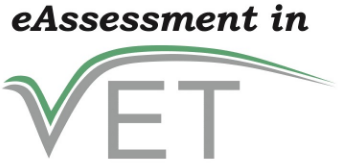-
Covid-19
-
Introduction
-
Issues and Barriers
-
Pedagogy
-
Feedback
-
Approaches
-
Continuing Professional Development
-
Organising
-
Glossary
- All Glossary
- automation in education
- blog
- cloud computing
- content management system
- e-portfolio
- eAssessment
- edtech
- forum
- H5P
- Individualise in education
- LMS platform
- Moodle
- open-source software
- references
- resource facilitation
- rubric
- Validity
- video streaming
- virtual classroom
- virtual room
- vlog
- VoIP
- wiki
- Show All Articles (9) Collapse Articles
-
Creative Commons
-
Tools
- Aha Slides
- Backchannel Chat
- Coggle
- Conceptboard
- Formative
- FreshGrade
- Getcrossword
- Google Forms
- Kahoot!
- medQuizz
- Mentimeter
- Moodle
- Nearpod
- Padlet
- Poll Everywhere
- Quizlet
- Quizziz
- Seesaw
- Socrative
- Trello
- Typeform
- Wordwall
- Show All Articles (7) Collapse Articles
-
Português
-
- AhaSlides
- Backchannel Chat
- Conceptboard
- Coggle
- Formative
- FreshGrade
- Getcrossword
- Google Forms
- Kahoot!
- medQuizz
- Mentimeter
- Moodle
- Nearpod
- Padlet
- Poll Everywhere
- Quizlet
- Quizziz
- Seesaw
- Socrative
- Typeform
- Wordwall
- Trello
- Show All Articles (7) Collapse Articles
-
Scenarios
Key areas of responsibility
Prior to the platform course delivery the assessment should be defined and set-up by the trainer (diagnostic, formative, summative and for learning assessment). The trainer should use diverse techniques, in accordance with the platforms and the course learning outcomes and subjects (multiple choice, closed response questionnaires, open exercises, simulations, specific tasks, collaborative exercises, research activities, etc.).
Remember the following principles:
The assessment system should be clear to learners, containing guidelines regarding the objectives and dimension (level of depth), a timeframe with deadlines, criteria, and weighting of the various assessment instruments.
The assessment should promote autonomy and interaction. Individualised or flexible pathways should be provided, allowing learners autonomy, creativity, learning through experience and action. Individualised learning management should be promoted through the creation of portfolios of acquired skills and knowledge.
Learning guidance is provided by introducing analytical feedback and mechanisms for self-training and autonomy according to the specific needs of the learners.
Feedback is given to the learners on the assessment results to systematically support the self-directed learning.
Individualised learning management is promoted through the creation of portfolios of acquired skills and knowledge. acquired knowledge.
